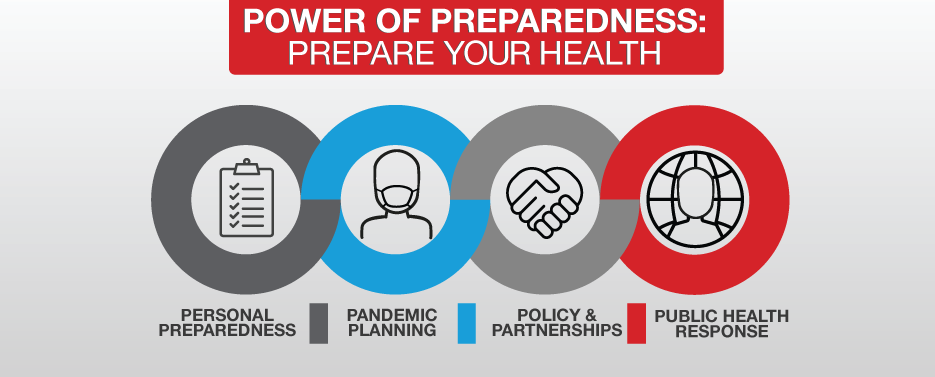
Each year, government organizations such as the Centers for Disease Control and Prevention (CDC) and the Federal Emergency Management Agency (FEMA), nonprofit agencies, such as the American Red Cross and private enterprise, including Allied Universal, to mark September as the official month to observe national emergency preparedness. All year long, members of educational, municipal and community groups across the United States should prepare to respond to an infectious disease outbreak, chemical or radiological release, or other manmade or natural disaster. To that end, September 15 is designated National Day of Action. While the CDC is using this year’s campaign to highlight preparedness in regard to public health, FEMA is turning its attention toward emergency planning.
Prepare Your Health
In 1918, a flu pandemic swept the globe, making 500 million people sick and killing at least 50 million, worldwide. Pandemics occur when a new influenza strain emerges, infecting people who have little or no immunity. As evidenced in the outbreak a century ago, the consequences can be severe. Thankfully, pandemics happen infrequently today because public health officials, scientists and private citizens are working together to educate people and minimize risks. One such step is to consider getting a flu vaccine, which could prevent widespread infection. To learn more from the CDC about how to Prepare Your Health, click here.
Disaster Preparedness
The theme of this year’s FEMA observance is: Disasters Happen. Prepare Now. Learn How. Weekly topics are designed to highlight the myriad roles that individuals, public officials, and disaster response organizations play in disaster preparedness.
Week 1: Make and Practice Your Plan
Each preparedness step you take improves your company, neighborhood and/or family’s ability to respond to a public emergency. The first week in September, prepare by stocking up on nonperishable food, water, basic safety supplies, and personal items you would need to take care of yourself until help arrives. The best way to be prepared is to create a plan. For info about making a basic emergency supply kit, click here. Also, include a list of prescription medications for everyone in your household, for reference by first responders and other medical personnel.
Week 2: Learn Lifesaving Skills
When an emergency happens, be quick to respond. To prepare, learn lifesaving skills, such as CPR and first aid. Take classes to learn how to give abdominal thrusts, ways to prevent hypothermia, and how to use an Automated External Defibrillator (AED), in case someone goes into cardiac arrest. Thankfully, these devices are supplied in public settings such as schools, malls and business offices. Familiarize yourself with practical safety steps for emergency situations, like shutting off water and gas.
Week 3: Check Insurance Coverage
How long has it been since you’ve checked your insurance policies and coverage for hazards? Consider everything you could face, such as floods, earthquakes, and tornados. Check with your personal or commercial insurance agent to see how well you and your property would fare in any given emergency.
Week 4: Save for an Emergency
Set aside money in an emergency savings account to be used in any crisis. Keep a small amount of cash on hand, but hidden, at home. Stow small bills because ATMs and credit cards might not work after a disaster. Small denominations will come in handy if you need to purchase necessary supplies, fuel or food.
Keep National Preparedness Month Going All Year
Though National Preparedness Month officially ends after September, the conversation about emergency health preparedness should continue. Keep the topic of personal and public health preparedness top-of-mind, year-round. From all of us at Allied Universal Fire Life Safety Services Training, Happy National Preparedness Month.
About the Allied Universal Fire Life Safety Services System
Our interactive, e-learning program helps all types of buildings, including those in the commercial, residential, and higher education space, with compliance to fire life safety codes and instantly issues a certificate to building occupants who complete the course! It’s a convenient and affordable solution to the training needs of your facility.









